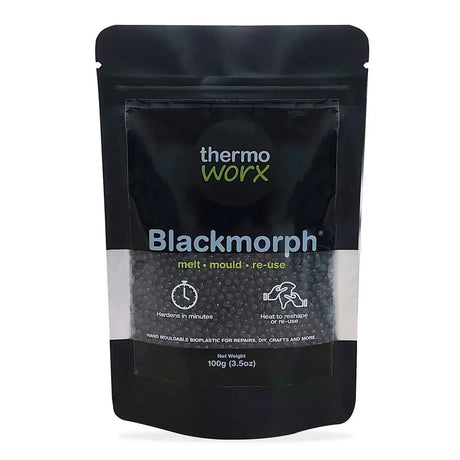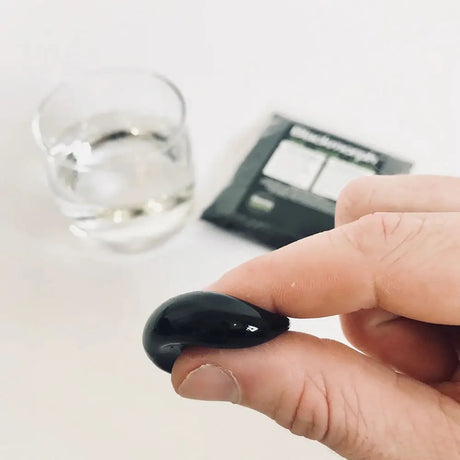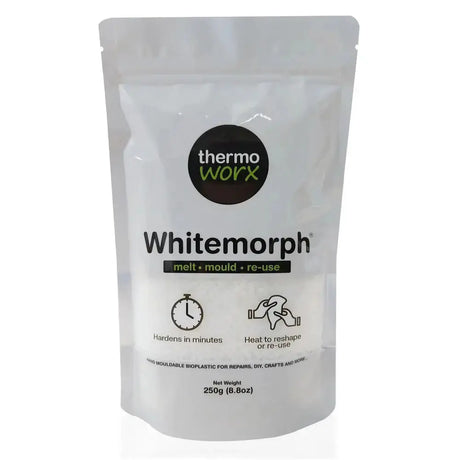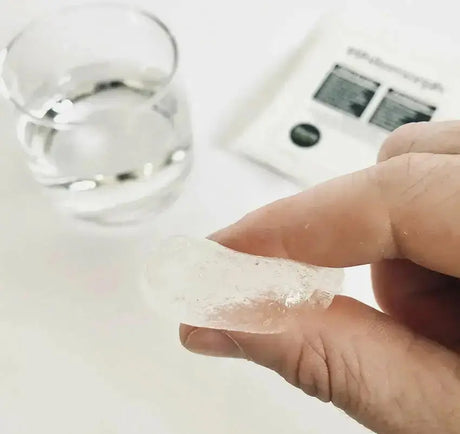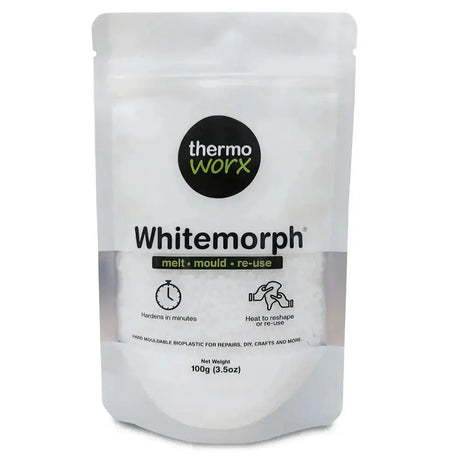Understanding Thermo Plastics
What are Thermo Plastics?
Blackmorph® and Whitemorph® are reusable thermoplastic polymers with low melting points. When heated above 62°C, the pellets fuse and soften, allowing users to shape the polymer by hand!
When cool, they harden to a solid, non-brittle, strong material with unlimited possibilities. Blackmorph® and Whitemorph® have no shelf-life and are fully biodegradable.
Imagine the possibilities for creating electrodes. Use them with conductive rubber or metal electrode surfaces to create something unique to take your stimming to new levels of enjoyment.
Definition and Characteristics
Thermoplastics are plastics that become pliable or moldable when heated. This is an essential characteristic because it allows manufacturers to shape these materials in various designs. They solidify upon cooling, which makes them highly versatile for many applications. Because of this property, thermoplastics can be reused multiple times without losing their structure.
Common Types of Thermoplastics
Some of the most common types of thermoplastics include polyethene, polystyrene, and polyvinyl chloride (PVC). These materials are widely used in everyday items like containers, toys, and pipes. Each type of thermoplastic has unique properties, which make it suitable for different applications. For example, polyethene is known for its durability, while polystyrene is favoured for its insulation properties.
Applications in Various Industries
Thermoplastics are used in a wide range of industries, including automotive, packaging, and electronics. In the automotive sector, thermoplastics are prized for their lightweight nature, which can improve fuel efficiency. In packaging, they offer flexibility and protection for products. Therefore, the demand for thermoplastics continues to grow, making them a staple material in modern manufacturing.
Whitemorph
Blackmorph Thermo Plastic 100g
Stock très faiblePrix habituel £12.99 GBPPrix unitaire /IndisponibleWhitemorph
Whitemorph Thermo Plastic 250g
Stock faiblePrix habituel £16.99 GBPPrix unitaire /Indisponible

